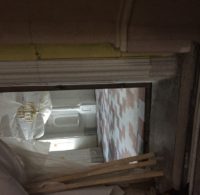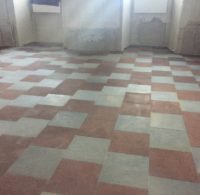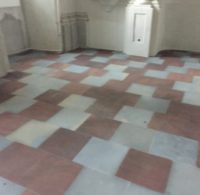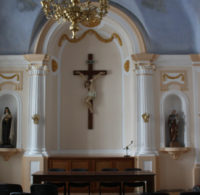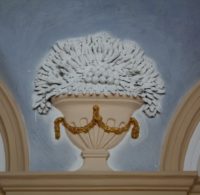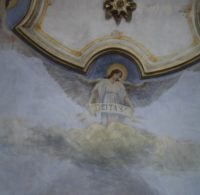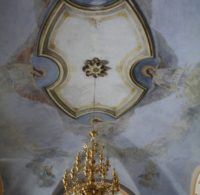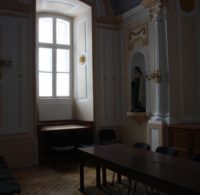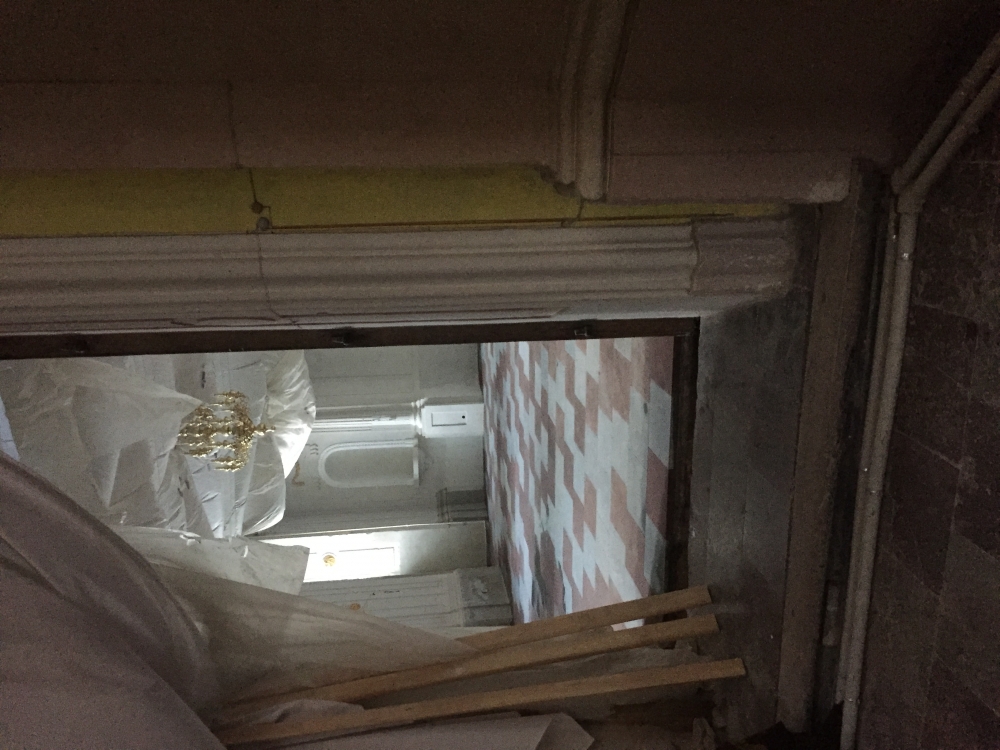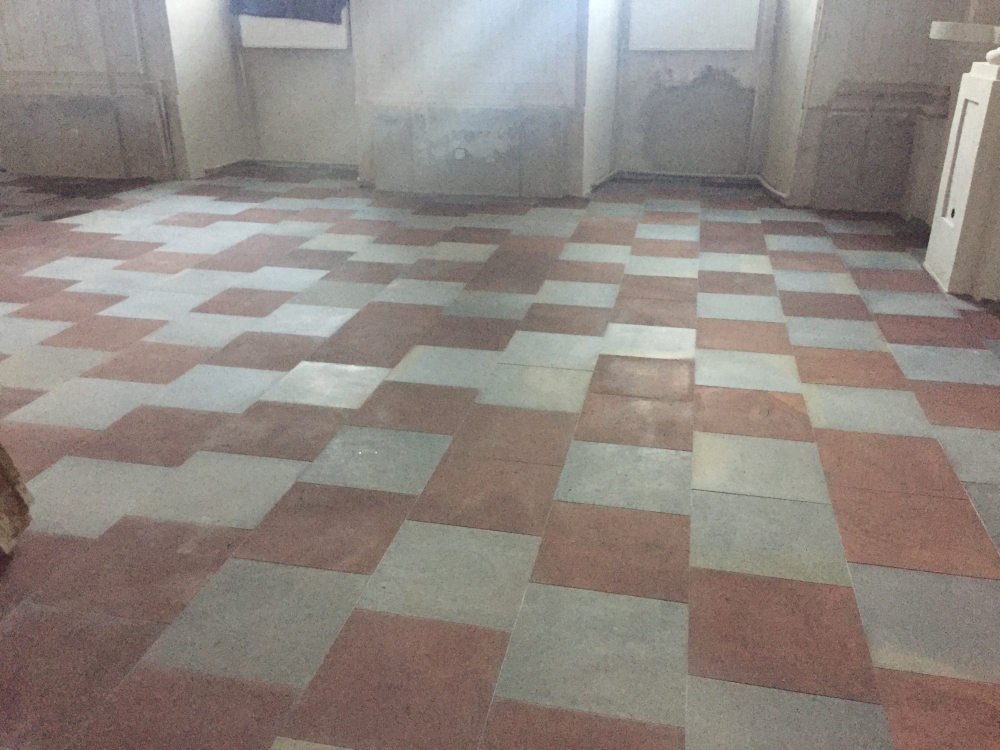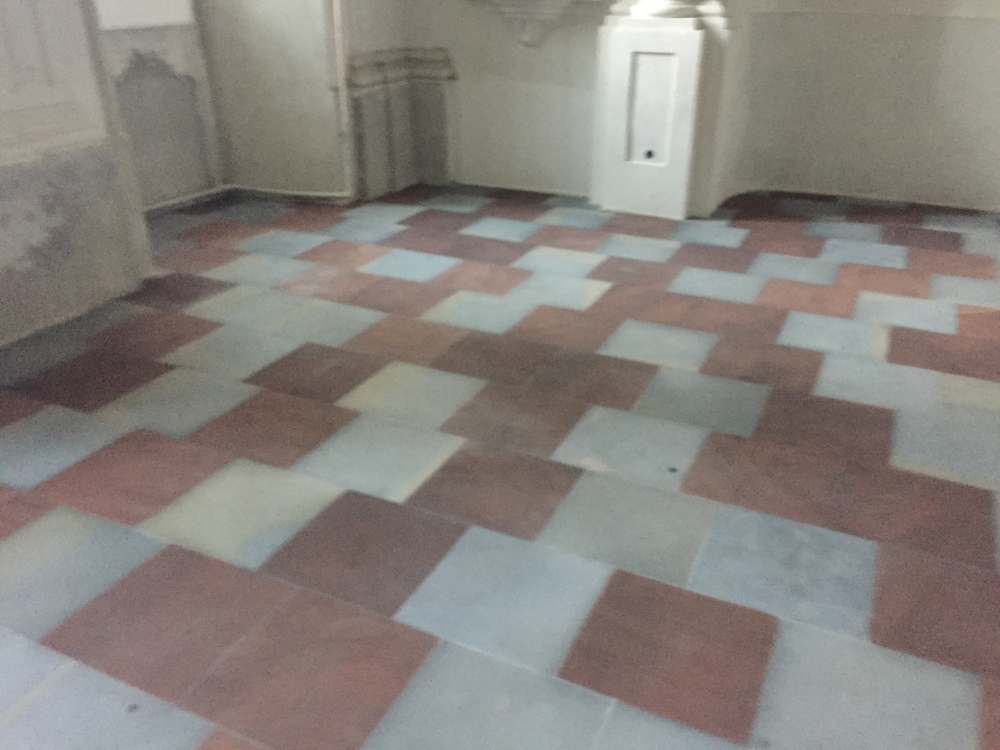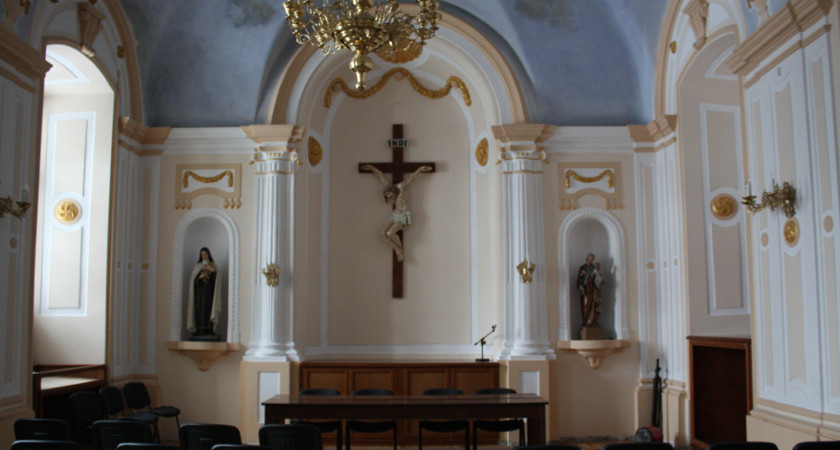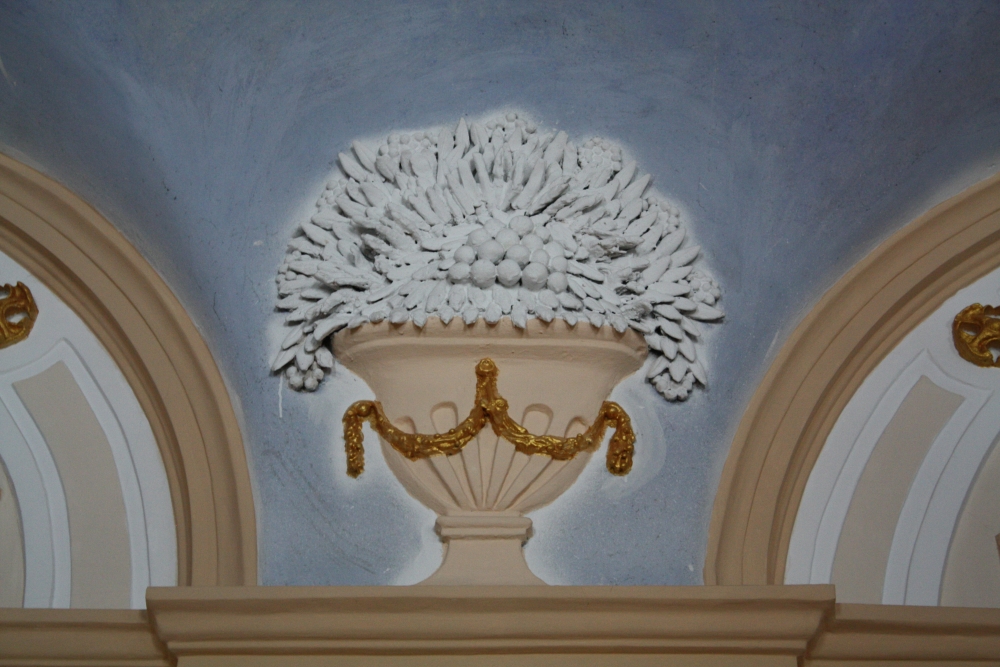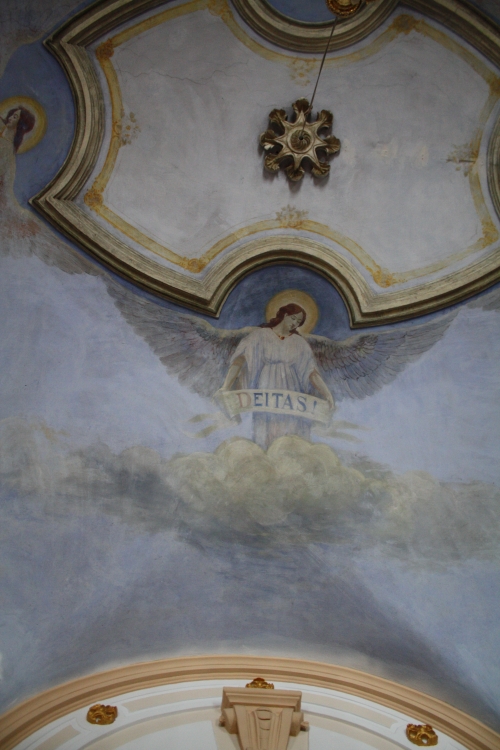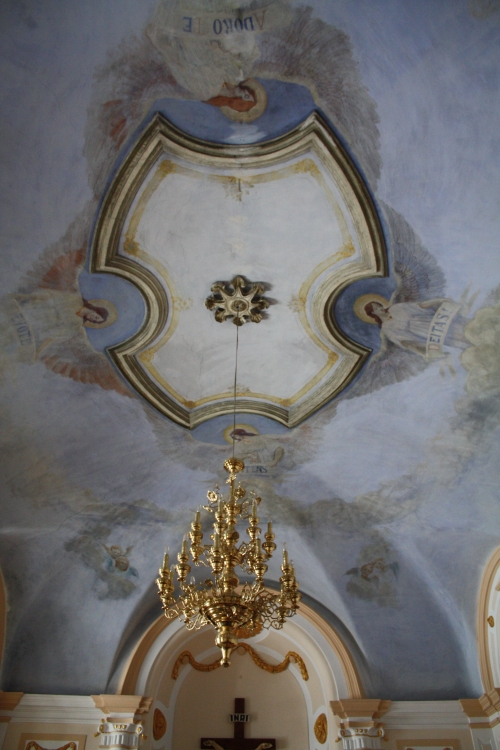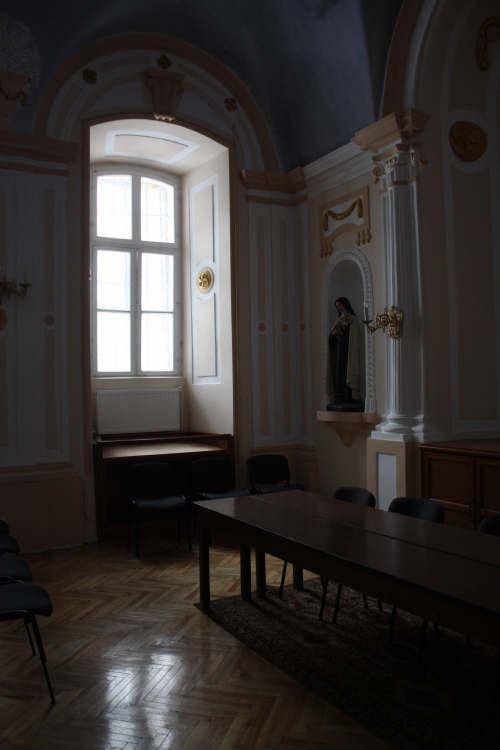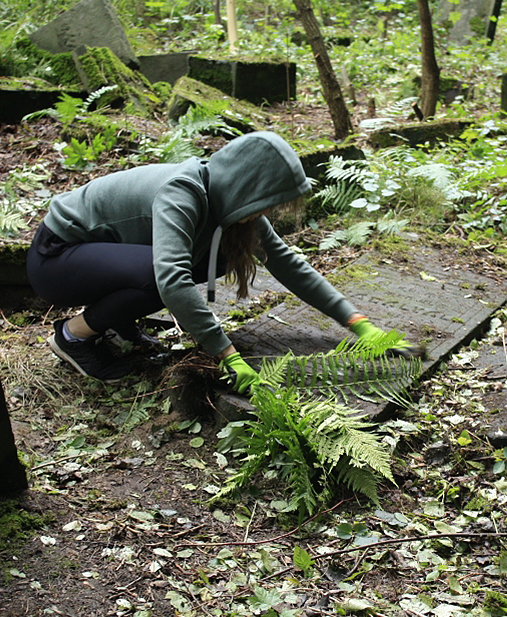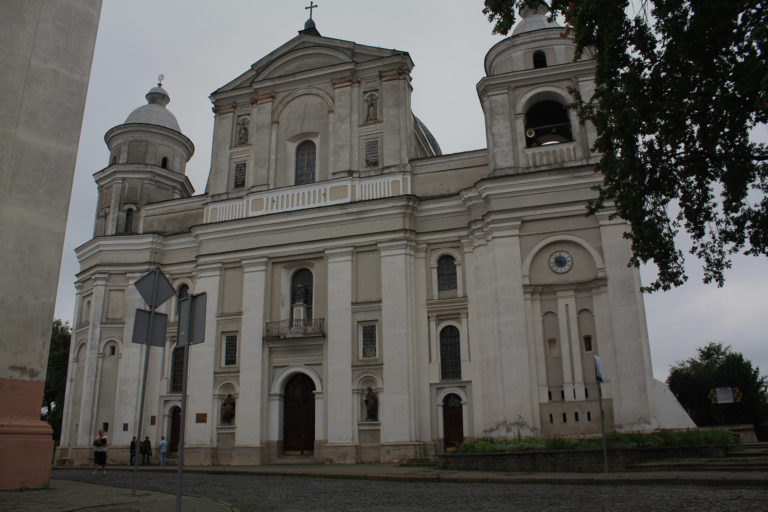o projekcie
The Saint Peter and Paul Cathedral in Lutsk is one of the most important Polish monuments preserved in the area of Volhynia. Today, it is also a major venue for Poles living in the capital of the Volhynian Voivodeship to meet.
The origins of the Jesuit monastery in Lutsk date back to 1604, when Jesuit monks were invited by Bishop Marcin II Szyszkowski to start their teachings and minister at the local Holy Trinity cathedral. The new monastery foundation was approved in 1608 in Rome by the Superior General of the Society of Jesus of the time, Claudio Acquaviva, and in 1609 – by Sigismund III Vasa. The local Jesuits obtained plots of land from Greater Castellan of Kiev Jerzy Wiśniowiecki, from princes Jerzy and Mikołaj Czartoryski, and from other noblemen. All this led to the consecration of the foundation stone by Bishop Paweł III Wołucki in 1610. The stone was incorporated into the foundations of the new church building.
The original design of the church is attributed to Giacomo Briano – the architect of the Lesser Poland Province, staying in Lutsk in the period 1616–1619. The broad two-steeple façade of the building was designed by Benedetto Molle, and the person behind the baroque-classical décor of the interiors was probably Paweł Giżycki, but it is also possible that Michał Sobolewski had some contribution to it too. The church was consecrated by Bishop Andrzej Gembicki in 1639. However, it still didn’t look as we know it today. The buildings adjoining the church from the side of the chancel were built a few years later, after 1646.
With the dissolution of the monastery in 1773, the current seat of the Jesuits came under the supervision of the Commission of National Education. Soon after, in the second half of the 18thcentury, it was handed over to the local diocese. The church became ‘promoted’ to the rank of a cathedral and substituted the Holy Trinity cathedral which was consumed by fire. The end of WWII marked a period of challenges the church had to face. First, in 1948, it lost its role as a secular building and was turned into a warehouse. Later on, in the 1970s, it became a home to the Museum of Atheism. 10 years later, when the interiors of the building served to host an exhibition entitled “Kosmos”, much of its décor was damaged or destroyed. The faithful could use the building as a church again only in the early 1990s.
Unfortunately, years of neglect and no funds available in the parish left a visible mark on the condition of the church. Preservation works are therefore necessary not only to halt the process of the building’s degradation but also to adapt the cathedral’s chapel to become an exhibition space for the collections of the Diocesan Museum in Lutsk. The museum will act as a testimony to the spiritual and material legacy of the Polish–Lithuanian Commonwealth.
In 2018, the main task of the foundation was to restore the period flooring with its sub-base in the chapel of the cathedral and in the side chapel to be adapted as an exhibition space for the collections kept at the Diocesan Museum in Lutsk.
The project was financed from the resources of the Ministry of Culture and National Heritage’s Culture Promotion Fund.
In 2017 we managed to stop the inflow of stormwater from the roof planes to the basement of the building. A storm sewer system was installed to drain the stormwater from downspouts, connected to the municipal storm drainage piping. In order to additionally secure the building against moisture, the joints between the wall and the surrounding soil were sealed.
Certain elements of the monument were also subject to renovation in the same year. The performed works involved restoring the original entryway to the basement of the building, renovating the plasterwork finish coating inside the former chapel of the Blessed Sacrament and restoring the colour layers on the walls, the cracks in the vault were treated, and the window woodwork was restored. It was the first stage of the process aimed at arranging a space where the collections of the Diocesan Museum in Lutsk, founded by Rev. Augustyn Mednis, can be displayed and viewed at their best.
The works described above were carried out by Den sp. z o.o. represented by Artur Klecki, MSc Eng. The project’s conservation supervision was managed by AFA Professor Janusz Smaza, PhD, and Roman Paruch, MSc Eng., a chartered building surveyor. The project was coordinated by Jan Rosiak.
The project was completed thanks to the funds provided by the Senate of the Republic of Poland as part of an order for supporting the Polish Diaspora and Poles abroad in 2017.
In 2014, the Cultural Heritage Foundation ordered an expert analysis to answer the question of which conservation works should be carried out first in order to prevent the further degradation of the cathedral. The findings of the survey of the cathedral basement showed that the main problem was a significant build-up of moisture. This was because of the lack of a system shedding surface water from the roof planes. It was the water penetrating and accumulating inside the basement of the cathedral which turned out to be the main factor of destruction.
